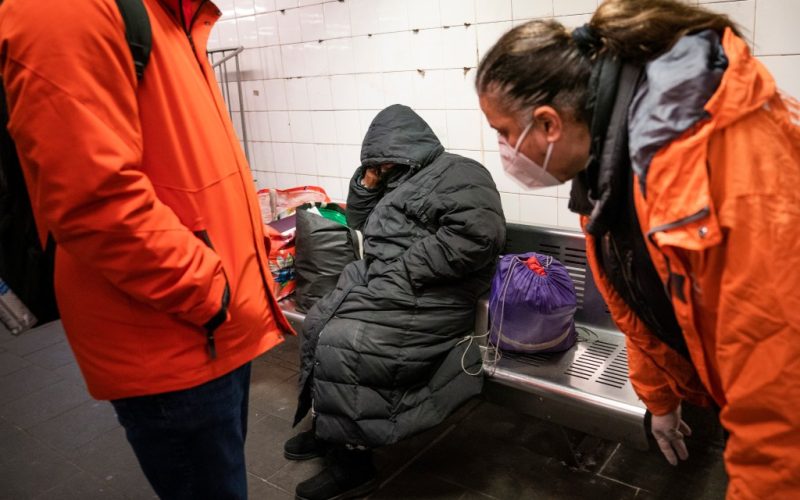New York is in the midst of both a mental health crisis and homelessness crisis, which is playing out in a very public fashion — on the streets, subways, and other public spaces. But when it comes to proposing a solution to helping the thousands of unhoused New Yorkers with serious mental illness, Mayor Adams continues to put too much focus on involuntary hospitalization. Forced removal by law enforcement makes the appearance of dealing with the problem to the rest of the public, but that’s just an illusion — and a very temporary one.
A day or so of medical attention does not address the underlying problems that compel people to bed down in subways and on the streets: a lack of both affordable housing and access to a continuum of voluntary mental health care. Involuntary hospitalization is a strategy with no end game.
Hospitalization is temporary by nature; patients cannot remain indefinitely and, in most cases, are discharged without being connected to housing or ongoing treatment and soon wind up back on the street. Moreover, people taken into psychiatric care against their will are often traumatized by that experience and become more resistant to future offers of actual aid and care.
Adams touts the city’s success in having conducted more than 7,000 involuntary removals last year — but the report has no data on how many people were subject to repeated involuntary transport or how many were connected to housing or long-term treatment. Until permanent housing and continued access to psychiatric care become part of the equation, nothing will change.
Even when people voluntarily seek mental health care, the city doesn’t deliver on the promise — there are currently more than 1,400 people stuck on long waiting lists for such care. The Coalition for the Homeless has clients who have waited more than a year to be connected with a mobile mental health care team.
But the solution to the endlessly revolving door between the streets, hospitals, and shelters has already been successfully test-driven. Chronic homelessness among veterans has been effectively eliminated in New York City through an integrated effort to connect veterans to housing and supportive services. One of the reasons this effort was successful is the city’s elimination of barriers that make it difficult for people with mental illness to access housing and services that meet the needs of each individual.
This is demonstrably different from the city’s current approach, which has failed. Out of 955 street homeless people tracked by the city over several months last year — all of whom were approved for supporting housing — only 18% (175) were successfully placed in housing units.
There are currently around 4,000 vacant supportive housing beds in New York City that could be used to ensure that no homeless individual with severe mental illness is simply discharged back to a subway platform after being brought to the hospital for assessment.
By guaranteeing stable housing placement for these individuals, and by adding at least 14 new Flexible Assertive Community Treatment (ACT) teams and additional Intensive Mobile Treatment (IMT) teams — which successfully provide intensive, flexible support and treatment to patients who have not had success in traditional health systems — New Yorkers will see a difference in their communities and, more importantly, those most in need of housing and care will be housed, stabilized and connected with the services they want and need. It’s a win-win.
Gov. Hochul and the mayor can build on the dramatic success that New York has already achieved in ending chronic veteran homelessness and use existing, available resources to expand this model and to help unhoused New Yorkers with mental illness. Any homeless person involuntarily taken to a hospital for evaluation must be treated humanely and connected to stable housing upon discharge. This is the end game. Permanent housing is what creates long-term stability and makes consistent mental health care, substance use treatment, and employment counseling possible.
The governor and state legislators have the power right now to effectively deal with this crisis beyond the surface of simply removing people experiencing a mental illness crisis from sight. That is both the right thing to do and the most politically popular option: A recent poll found that 56% of New York City voters favored community-based mental health support, compared to just 38% support for involuntary hospitalization. All the puzzle pieces are at hand; they just need to put them together. The real question for our elected officials in Albany and City Hall is: “What are they waiting for?”
Giffen is executive director of the Coalition for the Homeless.








